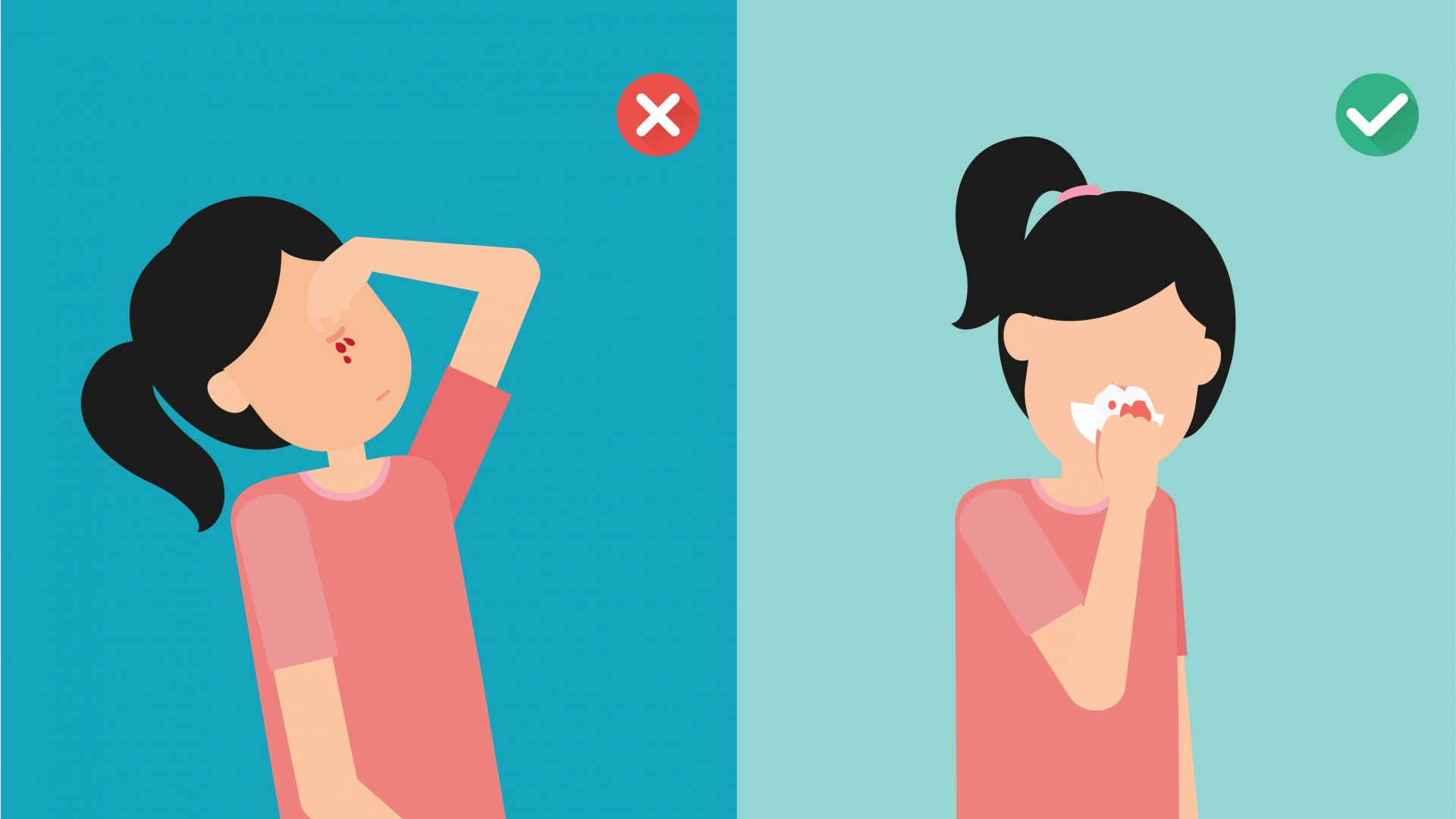How to stop and prevent nose bleeding
 |
| Photo: Medical News Today |
Most of the time, a single nosebleed isn’t cause for concern. However, if your nose continues to bleed after an injury, you should seek medical attention.
If you or your little one does get a nosebleed, here are some ways to stop it and prevent nose bleeding.
Why Is My Nose Bleeding?
Several things can trigger a nosebleed. The most common cause is dry air, either from having the heat on in winter or being in a hot, low-humidity climate. Other causes include:
-
Picking your nose
-
Blowing your nose too hard often
-
Injuries caused by a fall or getting hit in your nose
-
Side effects of medication, like blood thinners
-
Allergies
-
High altitudes, where the air is thin
How to stop a nosebleed
If you do get a nosebleed, here are five quick steps you can follow to minimize and stop the bleeding.
1. Stay calm.
If you start to get nervous, it can actually make you bleed more. Try to relax.
2. Sit upright and lean forward
 |
| Photo: Michigan Health Blog |
It’s tempting to lean back when you have a nosebleed to keep the blood from dripping down your face. However, leaning slightly forward is the better choice.
This prevents the blood from going down your throat, which could lead to choking or vomiting. Focus on breathing through your mouth instead of your nose and try to remain calm.
3. Resist the urge to pack your nose
Some people will stick cotton pads, tissues, or even tampons up the nose in an attempt to stop bleeding. This actually can worsen bleeding because it irritates the vessels further and doesn’t provide enough pressure to stop bleeding. Instead, use a tissue or damp washcloth to catch blood as it comes out of your nose.
4. Spray a decongestant in your nose
Decongestant sprays, such as Afrin, contain medications that tighten blood vessels in the nose. This not only can relieve inflammation and congestion, it can also slow or stop bleeding. Applying three sprays to your affected nostril can help.
5. Pinch your nose
 |
| Photo: The Guardian |
Pinching the soft, fleshy part of your nose below the nasal bones for about 10 minutes can help to compress blood vessels and stop bleeding. Don’t let up on the pressure for these 10 minutes — otherwise, the bleeding could re-start and you’ll have to start over.
6. Repeat steps for up to 15 minutes
If your nosebleed doesn’t stop after 10 minutes of pressure, try re-applying pressure for 10 more minutes. Sometimes, you can place a decongestant-soaked cotton ball into the affected nostril and compress the nostril for 10 minutes to see if the bleeding stops.
If you can’t get the bleeding to stop after 30 minutes of effort or you’re bleeding a significant amount, seek emergency medical treatment.
Once the bleeding has stopped, do not touch or blow your nose. This may start it bleeding again. But if it does restart, gently blow your nose to get rid of any blood clots. You can also spray a decongestant such as oxymetazoline (Afrin, Mucinex, or Vicks Sinex) in both nostrils. Then pinch your nostrils shut and breathe through your mouth for 5 to 10 minutes.
Call your doctor if:
-
You fell or hit your nose on something
-
You get nosebleeds often
-
Your nosebleed lasts longer than 20 minutes even after you put pressure on it
If your doctor can’t get your nosebleed to stop with pressure, they might try:
Cauterization.This procedure burns a blood vessel closed. After your doctor numbs your nose, they’ll use either a heated electronic device (an electrocautery) or a chemical called silver nitrate to close the leaky blood vessel.
Packing. Your doctor puts a latex balloon or gauze into your nostril. This puts a lot of pressure on a blood vessel until it closes, cites webmd.


























